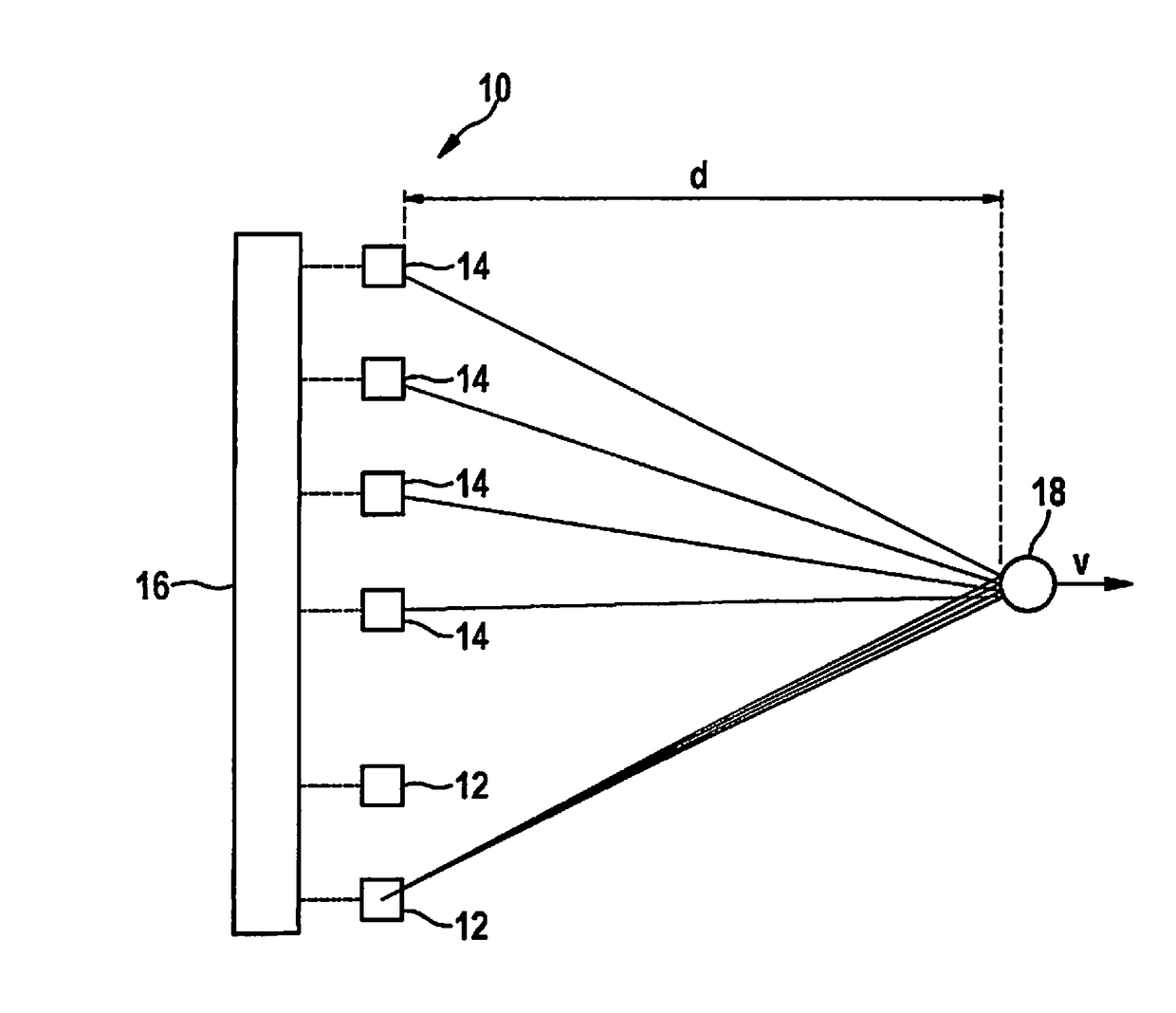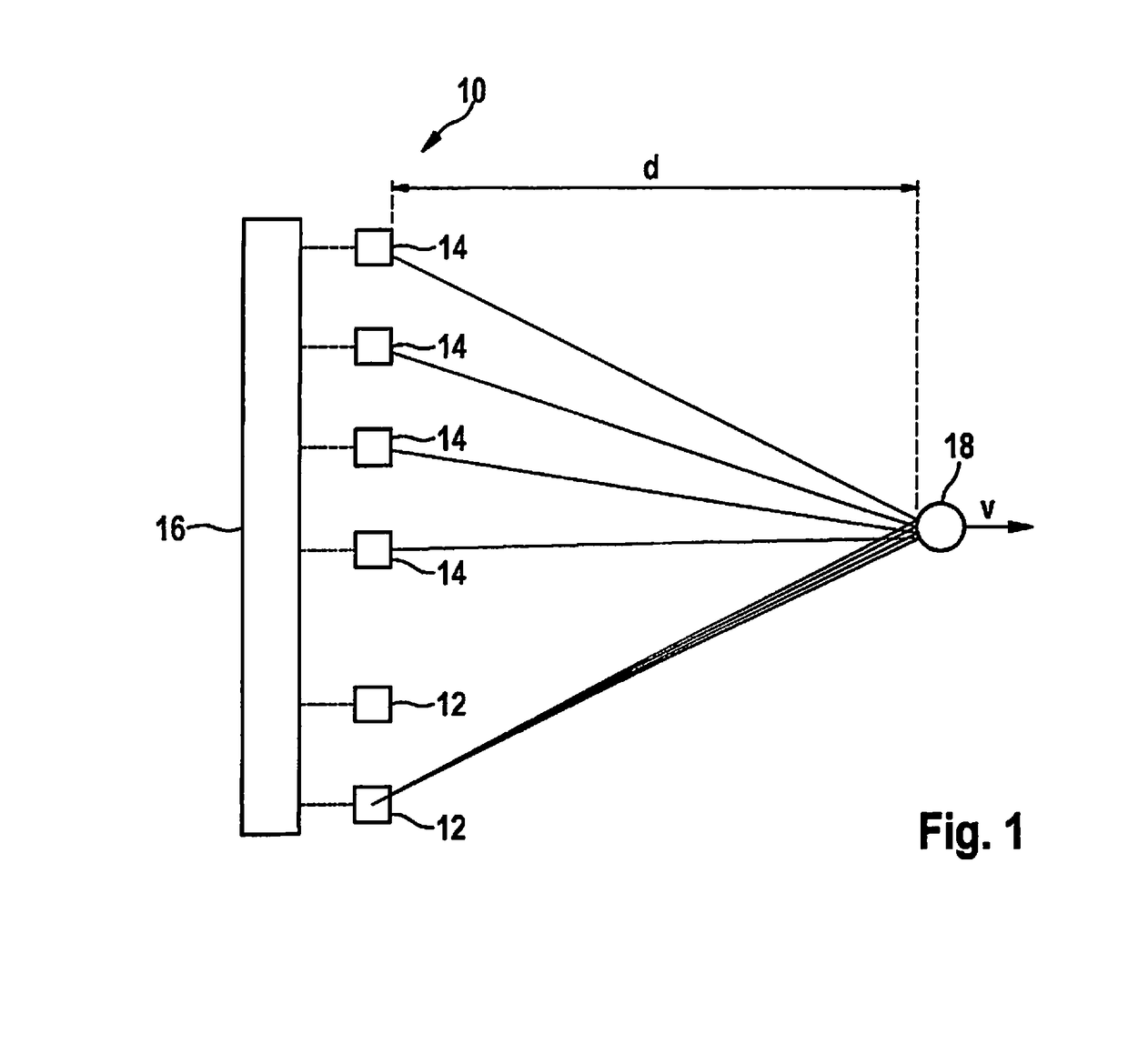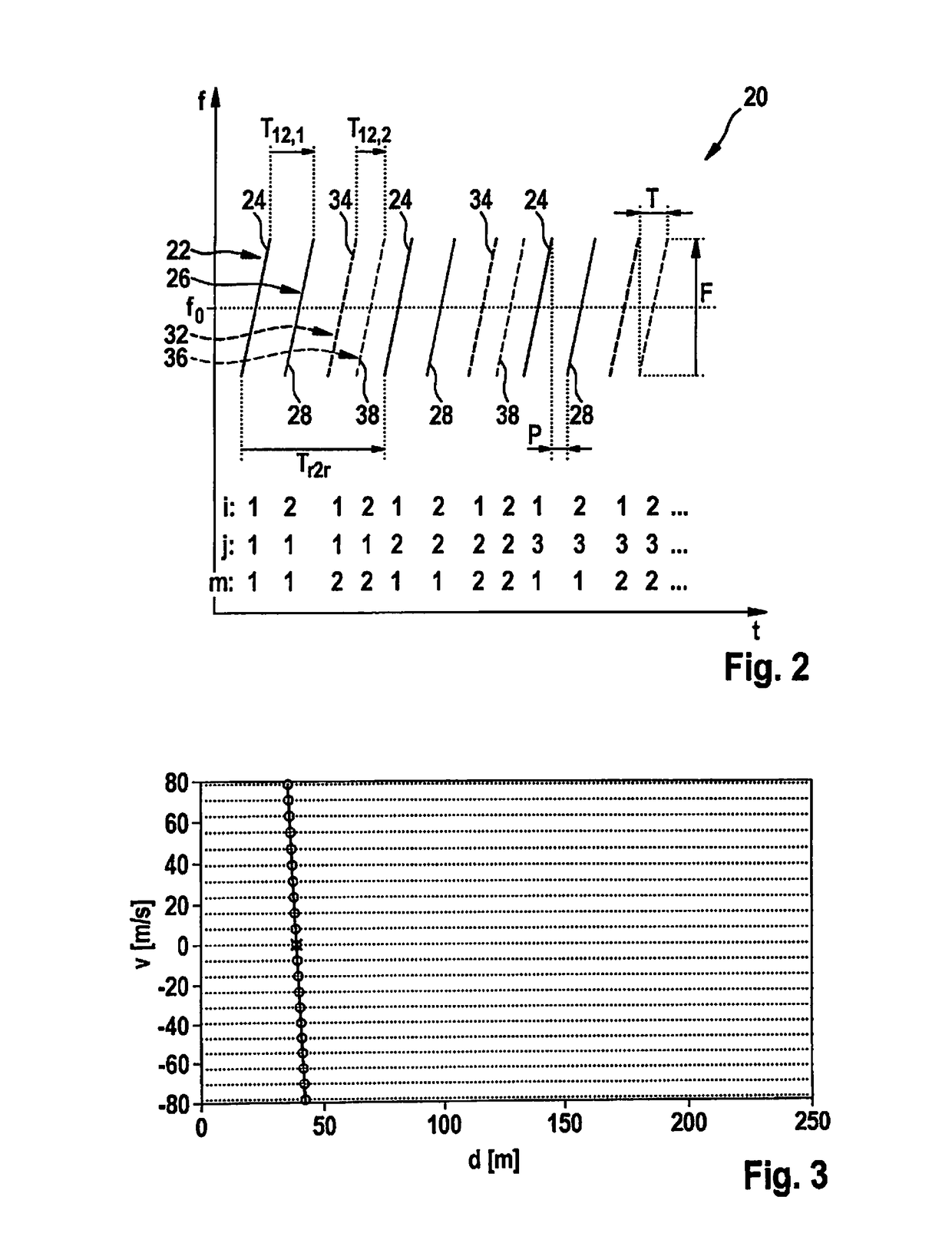MIMO radar measurement sensor
a radar and sensor technology, applied in the direction of measuring devices, instruments, using reradiation, etc., can solve the problem that the velocity cannot be exactly calculated, and the speed cannot be only estimated
- Summary
- Abstract
- Description
- Claims
- Application Information
AI Technical Summary
Benefits of technology
Problems solved by technology
Method used
Image
Examples
Embodiment Construction
[0055]FIG. 1 is a diagram of a very simple example of a (MIMO) FMCW radar sensor 10 that in this example has only two transmitting antenna elements 12 and four receiving antenna elements 14. Larger numbers of antenna elements are possible in practice. Transmitting antenna elements 12 are powered by a control and evaluation unit 16 and emit radar signals that are reflected at an object 18 and received by each of the receiving antenna elements 14. Transmitting antenna elements 12 and receiving antenna elements 14 are each of similar construction and therefore have matching fields of view. The transmitting and receiving antenna elements can each be made up of a patch antenna array.
[0056]The received signals are mixed down to baseband signals and evaluated in control and evaluation unit 16. Radar sensor 10 is installed, for example, at the front in a motor vehicle and serves to measure distances d, angles, and relative velocities v of objects 18, for example of preceding vehicles. The f...
PUM
 Login to View More
Login to View More Abstract
Description
Claims
Application Information
 Login to View More
Login to View More - R&D
- Intellectual Property
- Life Sciences
- Materials
- Tech Scout
- Unparalleled Data Quality
- Higher Quality Content
- 60% Fewer Hallucinations
Browse by: Latest US Patents, China's latest patents, Technical Efficacy Thesaurus, Application Domain, Technology Topic, Popular Technical Reports.
© 2025 PatSnap. All rights reserved.Legal|Privacy policy|Modern Slavery Act Transparency Statement|Sitemap|About US| Contact US: help@patsnap.com



